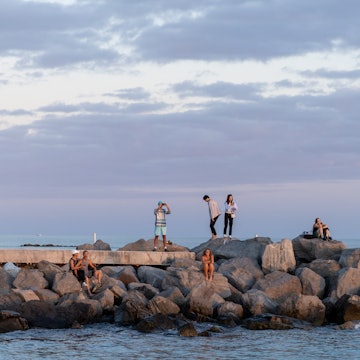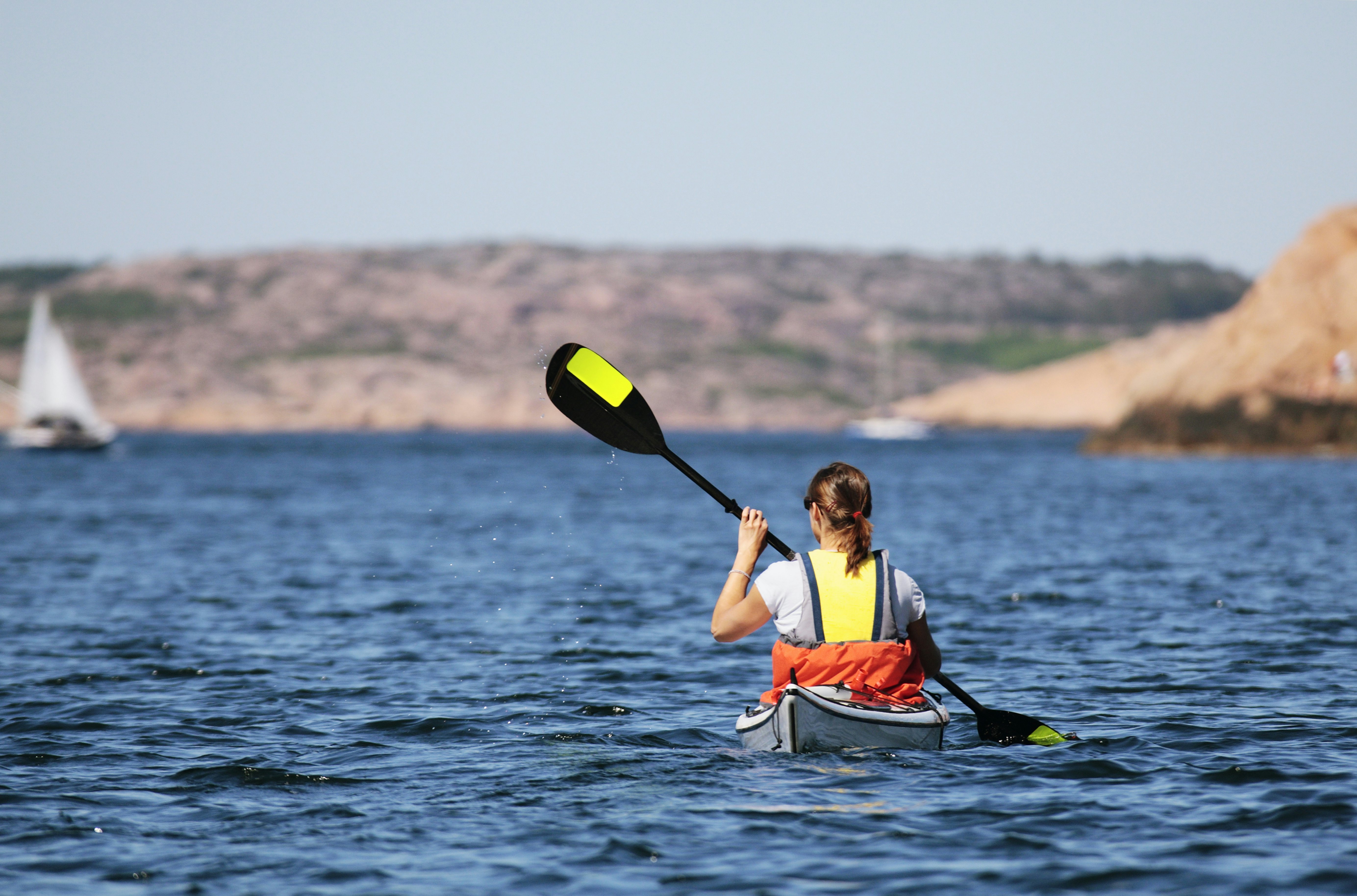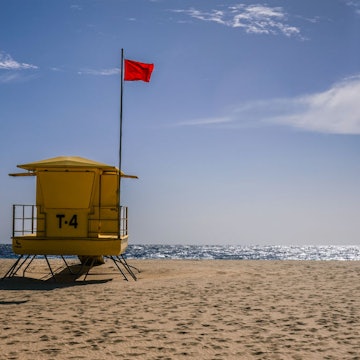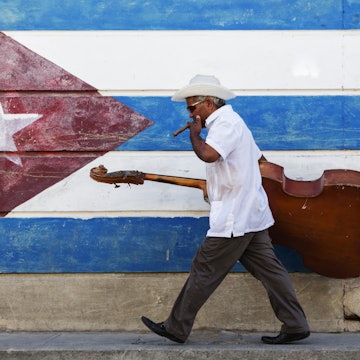

Christinae Church in Gothenburg, Sweden. SilvanBachmann/Shutterstock
Sweden’s second city, Gothenburg is arguably the country’s most engaging – a heady mix of stimulating museums, quirky shops, amusement-park thrills and nautical heritage.
Visitors can delve into the history of Swedish engineering at the Volvo Museum and the Stadsmuseum, with its thrilling Viking ship remains, then shop for Scandinavian fashion at the Nordstan mall. Families, too, have plenty to enjoy, including the Universeum (which might be Sweden’s top attraction for kids), the exhilarating rides at Liseberg Park, family picnics in the Slottsskogsparken, and a continuous supply of ice cream to savor on beaches up and down the coast.
Gothenburg is also a place where people like to get active. The city hosts the world’s largest half marathon, and there are endless possibilities for sea kayaking to uninhabited islands in the Gothenburg archipelago – a great way to burn off all those extra-large Gothenburg cinnamon buns.
Here are a few of the best things you can do in Gothenburg – and only in Gothenburg.

1. Explore two of Gothenburg’s coolest neighborhoods, Haga and Linné
Two fascinating, formerly working-class districts sit south of Gothenburg’s 17th-century core. Haga is a low-rise grid of timber-clad houses centered on the shopping street of Haga Nygatan. Once the haunt of sailors, dockers, prostitutes and street urchins, the neighborhood is today populated by artists and 30-something professionals. An unexpected highlight is the Hagabadet, originally a bathhouse built for the poor and now a cool spa with Roman-style baths.
With its tall, ornate 19th-century tenement blocks, wide avenues and intriguing indie shops, larger Linné is Gothenburg’s hub for nightlife. Its streets are lined with restaurants, bars and cafes set inside converted warehouses and factories.
Planning tip: Linné is also the setting for the kicking Andra Långdagen block party, a wild one-day bash that takes place every year on a date between April and June; ask locals for upcoming dates.

2. Get your adrenaline pumping at Sweden’s top theme park
No visit to Gothenburg would be complete without a turn around Liseberg, Scandinavia’s largest amusement park, and the city’s most popular attraction by a Viking yardarm. Perhaps the most famous ride here is Balder, a towering wooden roller coaster constructed in 2003 using modern Scandinavian woodworking techniques.
Other popular rides include the 116m-tall (381ft) AtmosFear, Europe’s tallest free-fall tower; Loke, a fast-paced spinning “wheel” that soars 42m (138ft) into the air; and the Valkyria, Europe’s longest dive coaster, with a nerve-stripping vertical drop of 50m (164ft). Prepare for some thrills and spills!
Planning tip: With the focus on high speeds and sudden drops, plan on eating after you’ve tried all the rides.
3. Delight the little ones at Gothenburg’s kid-friendly museums
After the action at Liseberg, your little ones will love Universeum, where visitors can explore a humid rainforest complete with trickling water, tropical birds, and monkeys leaping through the greenery. Get hands-on at the science exhibitions, where themes range from nanotechnology and space travel to mixing music.
Some parts of the permanent exhibition at the Världskulturmuseet (Museum of World Culture) were designed by children. And at the grand Stadsmuseum, young visitors can ride a typical blue-and-white Gothenburg tram, climb the city towers, and take in the Viking exhibition, including the remains of the Äskekärrkeppet, the only original Viking vessel in Sweden.

4. Fire up you engine at the World of Volvo
When it comes to Swedish brands, car manufacturer Volvo is rivaled only by IKEA when it comes to global reach. Assar Gabrielsson and Gustaf Larson founded the company in Gothenburg in 1924. Their first car, the ÖV4, was an open-top affair – a rather, er, unlikely design choice for Sweden’s changeable climate. Success came quickly over the following decades, and today the World of Volvo presents the manufacturer’s models chronologically, from the curvaceous limousines of the 1930s to the famously boxy models of the 1980s.
Highlights include the original P1800 coupe that Roger Moore drove in the UK television series The Saint, an American Volvo that racked up 5.4 million kilometers (3.35 million miles) and outlived its owner, and a Viggen fighter jet equipped with a Volvo-made engine.
Planning tip: If the exhibitions truly inspire you, ask about booking a test drive of a latest-model Volvo, especially one of the brand’s new EVs.

5. Eat your way through town
Gothenburg is rightly famous for its cinnamon buns (in a country renowned for its cinnamon buns). Don’t leave town without trying the gigantic local version, the Hagabullen, served at Cafe Husaren. Gothenburgers also swear by the sweet, gooey buns at long-established cafe, Brogyllen.
No liturgies are celebrated at Feskekörka, but the bounty of the sea is indeed sacred at Gothenburg’s famous “Fish Church.” Built in 1874 as the city’s fish market, the large, waterside, chapel-like building reopened in 2024 after years of renovations, and it now houses several restaurants and food counters serving just-caught seafood.
If you’re up for a splurge, reserve in advance for one of Gothenburg’s six Michelin-starred fine-dining restaurants – that’s quite a concentration for a city of just 600,000 people! Seafood and local game grace the tasting menu at Project, run by husband-and-wife team Anna and Cameron Irving. Vegetarians will love elegant Koka, where plant-based dishes and fish are the order of the day.
Detour: Anyone who loves seafood should take a taxi east of the city center to Signum, where a stunning dining room overlooks Landvettersjön lake.

6. Admire Nordic and Dutch art at the Konstmuseum
Home to Gothenburg’s premier art collection, the Konstmuseum presents a captivating survey of European artworks from the Renaissance to the present day. Before entering the neoclassical-modernist building, take a minute to admire Gothenburg’s most famous – and once scandalous – public artwork, the Poseidon fountain out front. When the statue was inaugurated in 1931, the god’s, um, assets shocked prudish Gothenburgers, and the offending parts were soon reduced.
The museum’s highlights begin on the top two floors, where you'll find Renaissance works, including pieces by Lucas Cranach and Paolo Veronese, followed by a whole room of Rembrandts. Work by Scandinavian masters such as Bruno Liljefors, Edvard Munch, Anders Zorn and Carl Larsson has pride of place in the Fürstenburg Gallery. Look out also for the superb sculpture hall and the Hasselblad Center, home to rotating exhibitions featuring work from Nordic photographers.
7. Consider Gothenburg’s seafaring past
A few steps from Gothenburg’s central shopping streets is Maritiman – composed of 20 historical nautical vessels, it’s the world’s largest floating ship museum. Inside the labyrinthine, 121m-long (397ft) destroyer Småland, in service from 1952 to 1979, hunched figures listen to crackling radio messages, and the bunks look just slept in – you half expect to meet uniformed sailors in the dim, twisting passages. Shimmy down into the 69m-long (226ft) submarine Nordkaparen for a glimpse into underwater warfare.
South of the city center, Sjöfartsmuseet brings local maritime history to life through an engaging collection of model ships, charts, mock-ups of sailors’ quarters and various period objects. Most compelling is the large, darkened hall full of soaring figureheads – some regal, some pensive, some vicious. You may spot some scrimshaw and a tiny weaving loom in a bottle among the nautical booty.
In the adjacent aquarium, North Sea flatfish, lobsters and jellyfish writhe in tanks – you might even find Nemo-like clownfish in the tropical fish section.
Detour: Consider Gothenburg’s seafaring present with a walk, run or bike ride along the city’s waterfront, which remains an active port. A loop of 14.5km (9 miles) will take you past the gantry cranes, cargo berths and parks that line the Göta älv, the city’s river.

8. Descend to a relic of the Cold War at Aeroseum
Anyone with an interest in 20th-century Cold War shenanigans should head north to the suburb of Hisingen to visit Aeroseum. Once a top-secret underground aircraft hangar that could brush off a hit by an atomic bomb, today this is Sweden’s top aviation museum.
The scale of this place is hard to grasp – the hangar covers 22,000 sq meters (236,800 sq ft) of underground halls large enough to steer a fighter jet through. Excavated in the 1950s, the site was part of Göta Air Force Base, which was later converted into the city's Säve Airport.
In 2008, the facility became a museum and it is now packed – literally – with thousands of exhibits, from Saab fighter jets to search-and-rescue helicopters, myriad model planes, and space suits.
Planning tip: To reach Aeroseum, take the hourly bus 35 to the nearby Säve Depå stop from Hjalmar Brantingsplatsen.

9. Take a day trip to the rugged coast
Immediately outside Gothenburg, the Swedish mainland dissolves into an archipelago of myriad islands and islets, many easily reachable on a day trip. The rugged Bohuslän Coast extends to the north in a procession of granite islands, bays and picturesque red-and-white fishing villages, interspersed with ancient rock carvings and Viking places of worship.
The archipelago's easygoing summer vibe is created by holidaying Swedes in seaside towns such as Strömstad, Smögen and Fjällbacka. To the south, the beach fun continues in Varberg, known for its naturist bathing and seaside fortress.
And there’s no better way to explore the Gothenburg coast than by kayak. In this tightly packed archipelago, islands are never far away from each other and even beginners can manage the distances. Pack a picnic, rent a craft and head to an uninhabited island for a sunbathing session that will linger in your memory.
Planning tip: The tour company Donsö Sea Kayak in Gothenburg can set you up with kayaks and stand-up paddleboards. For all your other gear needs, head to the amazing Kanotcentrum Göteborg shop in town.
This article was adapted from Lonely Planet’s Scandinavia guidebook, published in July 2025.













